

How batteries transform remote communities
The Isle of Eigg, a remote island in Scotland’s Hebrides, is powered entirely by renewable energy. Join Dr. Alistair Davidson, Executive Director of the Consortium for Battery Innovation, as he visits Eigg to explore how battery storage is enabling sustainable energy. Featuring Stu McCarthy, founder of the Isle of Eigg Brewery, this documentary showcases how renewable power supports local businesses and everyday life.
This hybrid energy storage (ESS) system made of advanced lead and lithium batteries is currently the largest of its kind in Poland.
Strategically situated to enhance the Bystra Wind Farm in Northern Poland, this facility maximizes renewable energy usage and stabilize local energy supplies.
Through efficient energy time-shifting, the system provides a reliable power source during peak demand periods, lowering energy costs for industries and residents. It focuses on low-carbon technologies and high recycling rates, setting a new standard for energy solutions in the region.
| Location | Gdańsk County, Pomeranian Voivodeship, Poland |
| Project launch | October 2019 |
| Construction time | 12 months |
| Size of the system | advanced lead batteries: 26.9 MWh energy; 5 MW power | lithium batteries: 0.47 MWh energy; 1 MW power; 4.5-hour system |
| Battery type | 2 V advanced lead-carbon AGM batteries** and lithium batteries |
| Battery provider | Showa Denko Materials |

View CBI's Interactive Map of energy storage case studies
This long-duration energy storage (LDES) system made of advanced lead-carbon batteries is currently the largest of its kind in the world.
Connected to Huzhou's main electricity grid since March 2023, the installation is helping to reduce energy costs to industries and citizens by providing an alternative power source at peak rates. These systems bring significant advantages such as low investment cost and rapid return on investment, and low carbon footprint with long design life and material with high recycling rates.
| Location | Huzhou, Zhejiang Province, China |
| Project launch | March 2023 |
| Construction time | 3 months |
| Size of the system | 1000 MWh (1 GWh) energy, 100 MW power; 10 hour system |
| Battery type | 3 million 2 V advanced lead-carbon AGM batteries |
| Battery provider | batteries were made in China, by Tianneng Power |
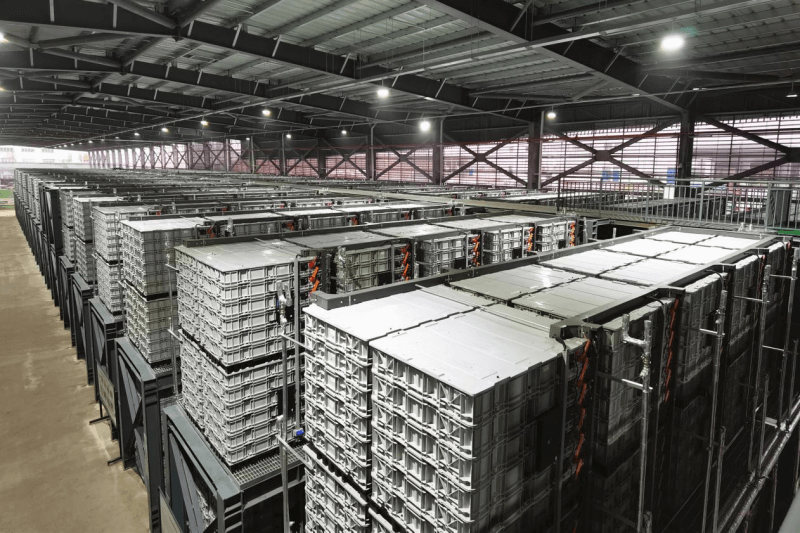
View CBI's Interactive Map of energy storage case studies
View CBI's Interactive Map of energy storage case studies
On Livingston Island, part of the South Shetlands Archipelago, a remote Antarctic research station is backed by advanced lead battery energy storage.
Conducting climate change research since 1988, scientists at the Bulgarian Antarctic Base Bulgarian Antarctic Base "St. Kliment Ohridski, study geology, mineral resources, glacier movements and the marine ecosystem.
“Securing the BESS for the Bulgarian Antarctic Base is an honour and a great test-on-the-edge for our VRLA batteries.”
Monbat Group

Technical Specification
Energy demand and consumption has steadily increased at the research station, requiring additional battery energy storage to support the needs of the scientists.
With a photovoltaic power plant deployed in 2008, the research station paired it with a battery energy storage system (BESS) using Monbat’s advanced lead batteries.
The BESS is used to balance power grids and save surplus energy, whilst also providing uninterruptible power despite adverse weather conditions.
Capable of operating in extremely low Antarctic temperatures of -38°C, Monbat’s VRLA lead batteries are chosen for their reliability, resilience and performance.
Battery energy storage using advanced lead batteries also facilitates the integration of more renewable energy sources into the electricity systems on site.
This adds an additional level of sustainability to the project as advanced lead batteries are recycled at rates of close to 100%.
Technical Summary
| Overall capacity | 12 kW |
| Number of batteries | 104 48V 90Ah batteries, connected in 26 strings |
| Battery specification | VRLA, AGM |
| Use case | Microgrid |
| Available stored energy | 120 kWh |
About the Company
Currently the 4th largest lead battery producer in Europe and No. 1 in the Balkans, Monbat operates under two main business segments – lead batteries and Li-ion high-power solutions.
Monbat applies a flexible vertically integrated model, synergistically uniting recycling and producing of lead, lead alloys and other raw materials, manufacturing and trading of batteries.
Monbat has a worldwide presence in over 70 countries and more than 20 different applications and industries.

View CBI's Interactive Map of energy storage case studies
In ten safari lodges in the Serengeti, Tanganyika Expeditions is powering their operations using solar energy and lead battery storage.
Disconnected from the Tanzanian utility grid, the safari lodges are provided with a self-sufficient electricity supply generated from sustainable solar power.
A project that demonstrates the great potential for a climate-friendly mobility transition in Africa through used vehicle conversion to e-drive and battery powering by solar electricity.
Johannes Germ, Managing Director, Asantys Systems GmbH

Technical Specification
The energy storage systems, developed by system Integrator Asantys Systems and energy consultant Olk, features:
Providing solar power around the clock for the accommodations and laundry facilities, it is also used to warm up shower water for guests.
In an added element of sustainability, the eco-safari has switched its vehicle fleet from diesel to electric vehicles. Both the safari and service vehicles are then charged using the SMA stand-alone grid supplied with solar power.
The solar batteries used to store the energy for the lodges are fully recyclable at end-of-life, and provide a high-performing, safe and sustainable solution.

Technical Summary
| Overall capacity | 2 x systems 55 kWp with SMA Sunny Tripower PV inverters |
| Battery specification | Lead-SLA batteries |
| Available stored energy | 2 x 220 kWh battery storage systems |
| Inverters | 2 x Multicluster Box 6 each with 6 battery inverters Sunny Island 8.0 |

About the Company
As a system integrator, Asantys Systems specializes in optimally designing solar systems for energy requirements, offering high-quality system components at the best prices and implementing project implementation including logistics, installation and project management cost-effectively and quickly.
With these services, we position ourselves as a specialized partner for project developers, plant operators and providers of financing concepts.

View CBI's Interactive Map of energy storage case studies
In a carport system for ITEMM, a battery energy storage system (BESS) coupled with solar panels acts as a living microgrid laboratory.
Designed for smart and sustainable energy usage, the carport solar system uses Moura’s lead-carbon batteries to store surplus photovoltaic (PV) energy generated during the day.
Partnering with ITEMM – Institute of Technology Edson Mororó Moura – the project allows Moura to test other energy storage system applications such as PV power smoothing, voltage control and frequency regulation.
Moura is at the forefront of developing lead-carbon battery energy storage systems in South America.
Luiz Mello, BESS and Industrial Batteries General Director, Moura

Technical Specification
Installed in 2019, the 250 kW / 560 kWh BESS performs peak shaving, backup and reactive power management.
Powered by Moura’s lead-carbon batteries, the technology provides:
The system also features a battery management system (BMS) which controls a new charging algorithm based on smart overcharging control, enhancing the system lifetime up to 10 years at 80% Depth-of-Discharge (DoD).
With the solar panels installed in November 2020, the PV system provides up to 250 kW. This additional renewable element complements the sustainability of the project, which utilizes highly recyclable lead-carbon batteries.
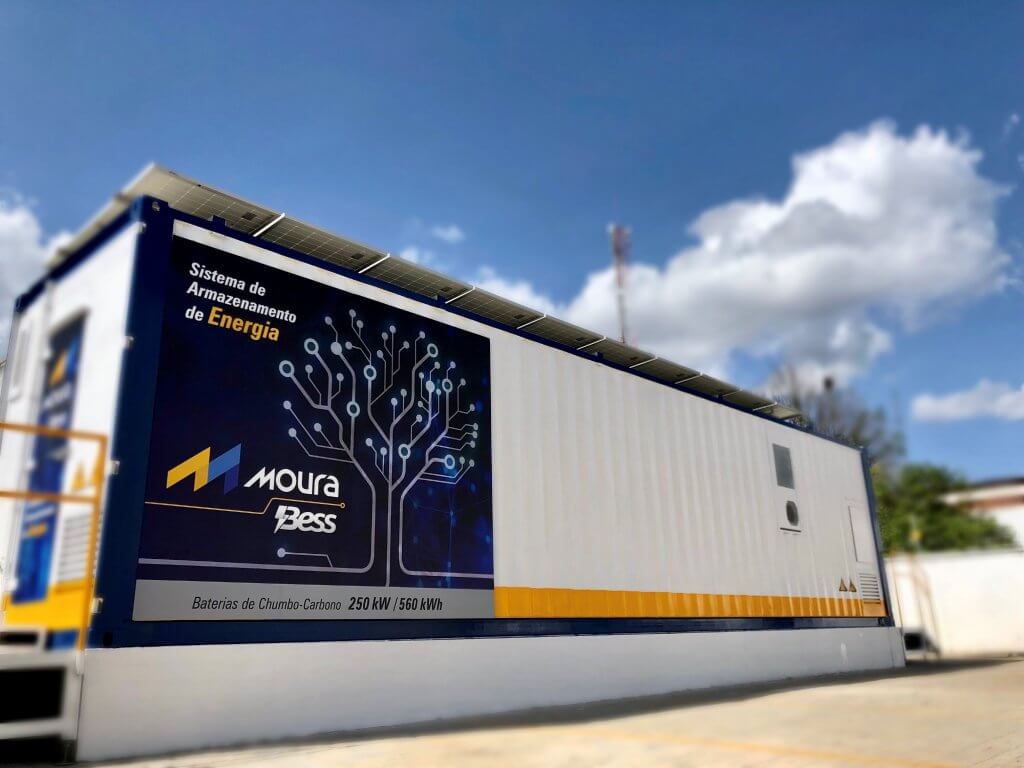
The PV plant powers the load, and the BESS stores the energy surplus generated through the solar panels during the day.
During peak periods when the distribution grid tariffs are higher, the BESS supplies the load and performs energy arbitrage services.
The system acts as a living microgrid laboratory to allow Moura and ITEMM to test a range of ESS applications and the performance of lead-carbon batteries in these applications:
Technical Summary
| Overall capacity | 250 kW |
| Total panels installed | 810 panels |
| Battery specification | Lead-carbon |
| Available stored energy | 560 kWh |
About the Company
Moura has seven industrial plants, six in Brazil and one in Argentina, with around 6,000 employees. Initially focused on the automotive sector, operations were expanded to other segments, producing batteries for numerous applications, such as battery energy storage systems, motorcycles, boats, forklifts, subways, trains and telecom stations.

View CBI's interactive map of energy storage projects
In two state-of-the-art solar installations, Exide Group is powering its battery production and recycling facilities using advanced lead battery energy storage.
With a combined capacity of 4.5 MWp between the two installations, located in Castanheira do Ribatejo and Azambuja in Portugal, Exide has reduced carbon emissions by an average of 20% across both sites.
Exide partnered with energy provider EDP for design, delivery and the incorporation of the energy storage component for the projects.
“More companies will rely on storage-backed self-generated power in the years ahead, and we are excited to be at the forefront of this trend. Our Sonnenschein A600 gel battery technology is extremely capable in this application.”
Stefan Stübing, CEO and President of Exide Technologies

Technical Specification
By pairing the solar installations with advanced lead battery storage, this project is providing an exciting option for energy-intensive manufacturing facilities to reduce both carbon emissions and energy costs.
Using their own batteries for storage, Exide is utilizing solar energy to provide cost-effective and renewable energy by storing the energy generated during the day.
The system is one of the largest self-generation installations backed by energy storage in Europe, featuring:
Producing enough energy to supply over 1,500 homes, the system showcases the benefits of using advanced lead batteries for large-scale energy storage projects.
Manufactured in Exide’s European production facilities, the Sonnenschein A600 gel lead battery range has been utilized for decades to support complex, large-scale network power applications.

With proven reliability, maintenance-free and first-class safety features, the battery offers long service life and protection against deep discharge. Fully recyclable at end-of-life, the batteries provide added sustainability for renewable energy storage applications.
As part of a ‘Green Social Building’, the battery system is operating as an island for the factory workers, where the solar panels provide energy during the day and the batteries provide power at night.
Technical Summary: PV Park
| Overall capacity | 4.5 MWp |
| Total panels installed | 11,250 |
| Total inverters | 70 |
| Battery specification | 290 cells Sonnenschein A600 Gel |
| Available stored energy | 500 kWh |
| Carbon emissions reduced | Castanheira facility: 23%Azambuja facility: 19% |
About the Company
Exide Technologies, headquartered near Paris, France, is a leading provider of advanced energy storage solutions for the automotive and industrial markets.
It designs, manufactures and markets today´s and next-generation battery technologies used across a wide range of applications, from automotive and off-road to material handling, stationary, rail and defense.

View CBI's interactive map of energy storage projects
As part of disaster relief efforts following 2017’s Hurricane Maria, residents from the Toro Negro Community in Puerto Rico partnered with local businesses and NGOs to restore power and ensure future resiliency.
Pairing a solar microgrid system with lead batteries in the remote, mountainous region of Ciales, provided 26 families with clean and reliable energy.
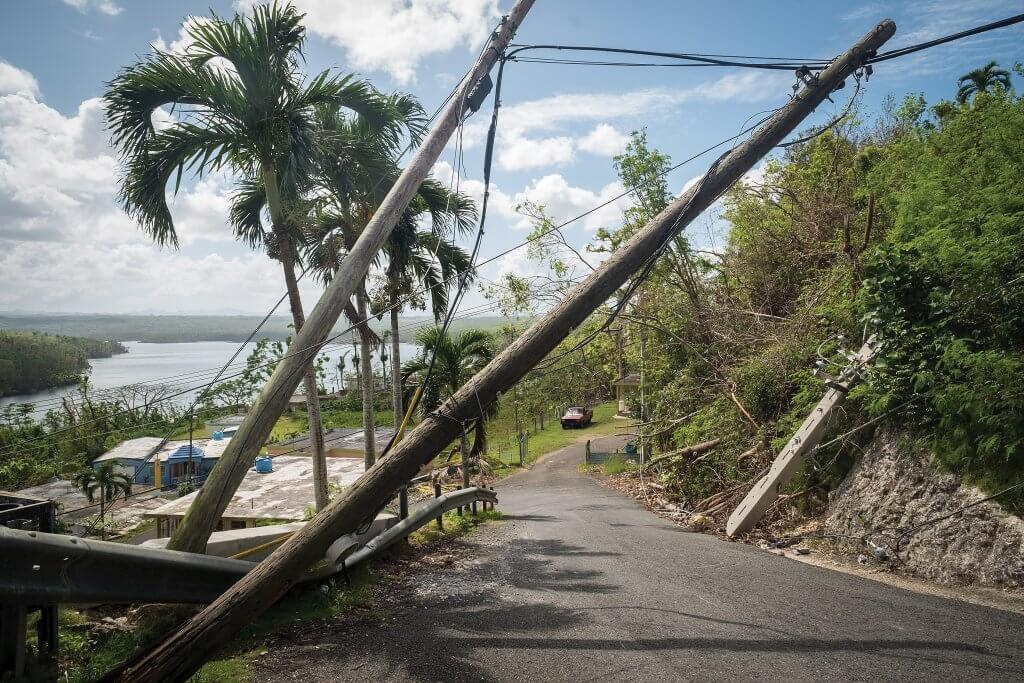
Technical Specification
Collaboration between the Puerto Rico Community Foundation (FCPR), non-profit SOMOS Solar and a key Deka customer Maximo Solar Industries, resulted in an efficient and sustainable energy system for the Toro Negro Community.
By reducing dependency on the electrical grid, the solar microgrid + lead battery storage system ensures future resiliency in the face of extreme weather events.
The system features:

The system is managed by the community-based organization in the area, with training and maintenance services provided by Maximo Solar Industries.
Particularly suited to microgrid systems requiring minimal maintenance, Deka Solar lead batteries offered the perfect solution for this installation.
With renewable solar energy incorporated into the microgrid system, Deka’s Solar lead batteries provide reliable, low-maintenance power where frequent deep cycles are required.
A crucial sustainable element of the clean energy system is the ability to recycle batteries at end-of-life, as Deka’s solar lead batteries are virtually 100% recyclable.
"East Penn Manufacturing and its wholly owned subsidiary, MK Battery, are proud to have been a part of such a project to help the wonderful people of Toro Negro get back on their feet after a natural disaster of monumental proportions.”
Mark Wels, Vice-President & General Manager, Sales – Reserve Power,
East Penn Manufacturing
Technical Summary
| Battery specification | 312 Deka Solar 8L16 batteries |
| Capacity | 115,440 Ah based on C20 rate |
| Overall voltage | 48V |
| Overall power output | 156.8 kW |
| Available stored energy | 5.54 MWh |
| Microgrids | 1 |
| Total solar panels installed | 598 |
| Number of families provided with power | 26 |
| Average system size per family | 5.6 kW |
About the Company
East Penn is located at Lyon Station in Pennsylvania and is the largest single-site battery manufacturing operation in North America.
The 520-acre campus uses the most technically advanced methods to manufacture batteries for energy storage, automotive, motive power, and reserve power.

View CBI's interactive map of energy storage projects
As part of efforts to address the electrification gap in the African continent, clean energy microgrids paired with battery storage have been rolled out as an affordable and reliable option.
Since 2017, Systems Sunlight has been engaged in strengthening energy infrastructure through Sierra Leone’s Rural Renewable Energy Project, aiming to improve essential services for over 346,000 beneficiaries.
“We continue with our mission as a company to contribute to society through clean and sustainable energy. Low-carbon clean energy can be the fuel for the economy and the motor for growth for the years ahead of us.”
Panagiotou Dimitrios, Sales Director, Systems Sunlight
Technical Specification
In collaboration with the Government of Sierra Leone, the UN Office for Project Services (UNOPS) and the UK’s Foreign Commonwealth and Development Office (FCDO), Sunlight’s advanced lead batteries were essential for Ebola recovery efforts post-2014.
Part of a four-year project, the first phase installed solar power mini-grids at 54 community health centres across rural Sierra Leone in July 2017.
The second phase involved the widening of access for electricity to houses, schools and business in 50 rural villages. This was achieved through expanding existing health centre solar power stations and installing dozens of independent mini-grids throughout each village, combined with advanced lead battery storage.

With more than 2,200 Sunlight OPzV battery cells provided, these advanced batteries were chosen for their reliability and outstanding performance for cyclic and hybrid installations.
Connected to a hybrid system of 90 mini grids and powered by renewable energy, the advanced lead batteries have resulted in the sustainable electrification of 50 rural communities.
Due to the unique design of Sunlight’s advanced lead batteries, they are particularly suited to renewable energy systems by offering long and reliable power cycles. This is crucial for the delivery of critical care by rural health centres:
Fully recyclable at end-of-life, advanced lead batteries offer an added economic benefit to the sustainability credentials of the technology.
The International Renewable Energy Association (IRENA) has predicted that off-grid and microgrid systems paired with solar photovoltaic (PV) will make a contribution of 181 GW by 2040.
PV-powered energy storage systems utilizing advanced lead batteries are essential to meet rural electrification needs of regions disconnected from the central electricity grid and are critical for the transition to clean energy across the globe.
About the Company
SYSTEMS SUNLIGHT S.A., based in Greece and operating in its third decade, specializes in the development and production of batteries and energy storage systems for industrial and advanced technology applications.

View CBI's interactive map of energy storage projects
A grid-side power station in Huzhou has become China’s first power station utilizing lead-carbon batteries for energy storage.
Starting operation in October 2020, the 12MW power station provides system stability for the Huzhou Changxing Power Grid to enhance the capacity of frequency and voltage regulation.
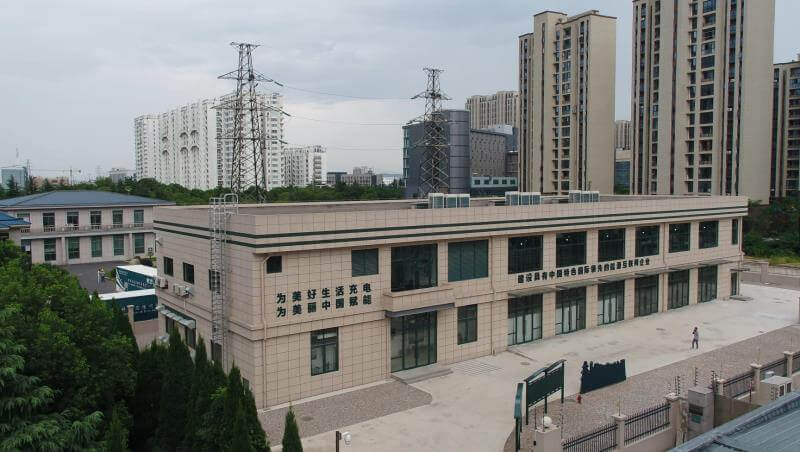
Battery energy storage used for grid-side power stations provides support for the stable operation of regional power grids.
NR Electric Co Ltd installed Tianneng’s lead-carbon batteries to provide a reliable energy storage solution for the 12 MW system, to deliver increased resiliency for the power grid and guaranteed emergency power supply for users in the power station.
The storage capacity of the installation is 48 MWh and the system comprises:
The system installed by NR Electric Co Ltd is equipped to provide on-site high/low voltage ride through, fast response speed, grid adaptability, primary frequency and voltage regulation, power quality control and black start.
The system follows US-based EPRI standards and the power dynamic response of the system is less than 30ms, whilst the frequency modulation response accuracy is less than 0.005Hz.
The high-voltage side is 10kV, and the low-voltage side is 380V. The 6MW/24MWh energy storage system is connected to the high-voltage bus at the user side by one parallel point.
The high-voltage side of the 10kV transformer of the three sets of 2MW/8MWh energy storage units is converged to the 10kV switch room, and then the 10kV bus is respectively connected through the 10kV cable line.

| Battery technology | Lead-carbon |
| Battery configuration | 20,160 batteries in 21 stacks |
| Plant power | 12 MW |
| Storage capacity | 48 MWh |
| Plant design life | 20 years |
NR Electric, as a power stability expert, is dedicated to all around solutions for electric power generation, transmission, and distribution.
With more than twenty years of experience and high-tech innovations, NR Electric provides a wide range of electrical and power electronics solution to its worldwide customers.

Tianneng Power International Limited is a leading enterprise in the industry of new energy power battery in China, founded in 1986.
Tianneng’s batteries are used for wind power and solar power storage and the company offers the recycling and cyclic utilization of waste batteries, the construction of smart microgrids in cities, as well as the building of green and smart industrial parks.

View the interactive map of energy storage projects
The historic power outages caused by Hurricane Sandy in 2012 starkly exposed vulnerabilities in the US power grid. In response, the New York State Energy Research & Development Authority (NYSERDA) formed local and federal partnerships to launch an initiative that incented building owners to add grid resilience behind the meter.
The Via Verde residences in New York City contracted Bright Power to create a solar + storage microgrid to support their condominium units. The solution consisted of 66 kW of solar power and 72 kWh of energy storage. This added reliability to the building’s power infrastructure during extreme weather events, reduced the building’s carbon footprint, and provided the added benefit of reducing residents’ electricity costs by $13,000 per year.

The energy storage component was to be installed inside the building, so lead batteries were selected due to their historic track record for safety. Bright Power selected Civic Solar to provide the solar + storage solution, which utilized GS Yuasa SLR 1000 lead batteries.
The NFPA required the battery system to be certified to the UL 1973 stationary battery standard. UL 1973 is increasingly becoming mandated by regulatorsacross the United States as a requirement for energy storage systems. Nuvation Energy’s battery management system was integrated with the GS Yuasa batteries to protect the batteries and help with safety certification of the energy storage system.
The strict monitoring and control provided by the BMS minimizes incidents of off-gassing, a safety response built into all VRLA batteries, by ensuring that the batteries are always being operated within nominal parameters. In a situation of over-temperature, overcharge, or excessive current, the BMS coordinates with the PCS to resolve these conditions and will disconnect the batteries if defined performance thresholds are exceeded.
For clients adding Nuvation Energy BMS to their systems, GS Yuasa extended their battery warranty from five to ten years, due to the impact on battery life expectancy.

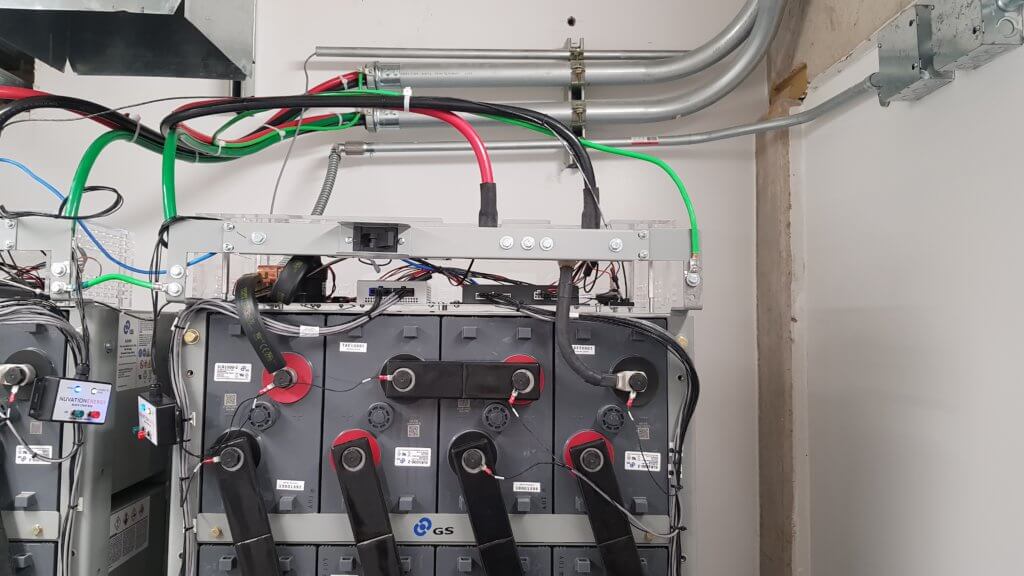

The energy storage system includes:
Based on core technology for efficiently charging and discharging energy, GS Yuasa products are used for a wide variety of applications in society, such as for automotive batteries, industrial batteries, uninterruptible power supply systems, or high performance batteries used for deep sea research and space development.

Nuvation Energy provides battery management systems (BMS) and energy storage engineering solutions to battery manufacturers and system integrators. They are headquartered in Sunnyvale, California and have a design center in Waterloo, Ontario, Canada. Nuvation’s utility-grade battery management solutions are used worldwide in various types of energy storage systems.

View the interactive map of energy storage projects
Harnessing abundant solar resources, an eco-resort located off the coast of Panama has chosen advanced lead batteries, paired with a battery management system (BMS), to power their island microgrid.
This unique project has installed new lead batteries to the existing battery energy storage system. Initially using East Penn’s Unigy II batteries, the project seamlessly incorporated GS Yuasa batteries into the project using Nuvation Energy’s BMS.
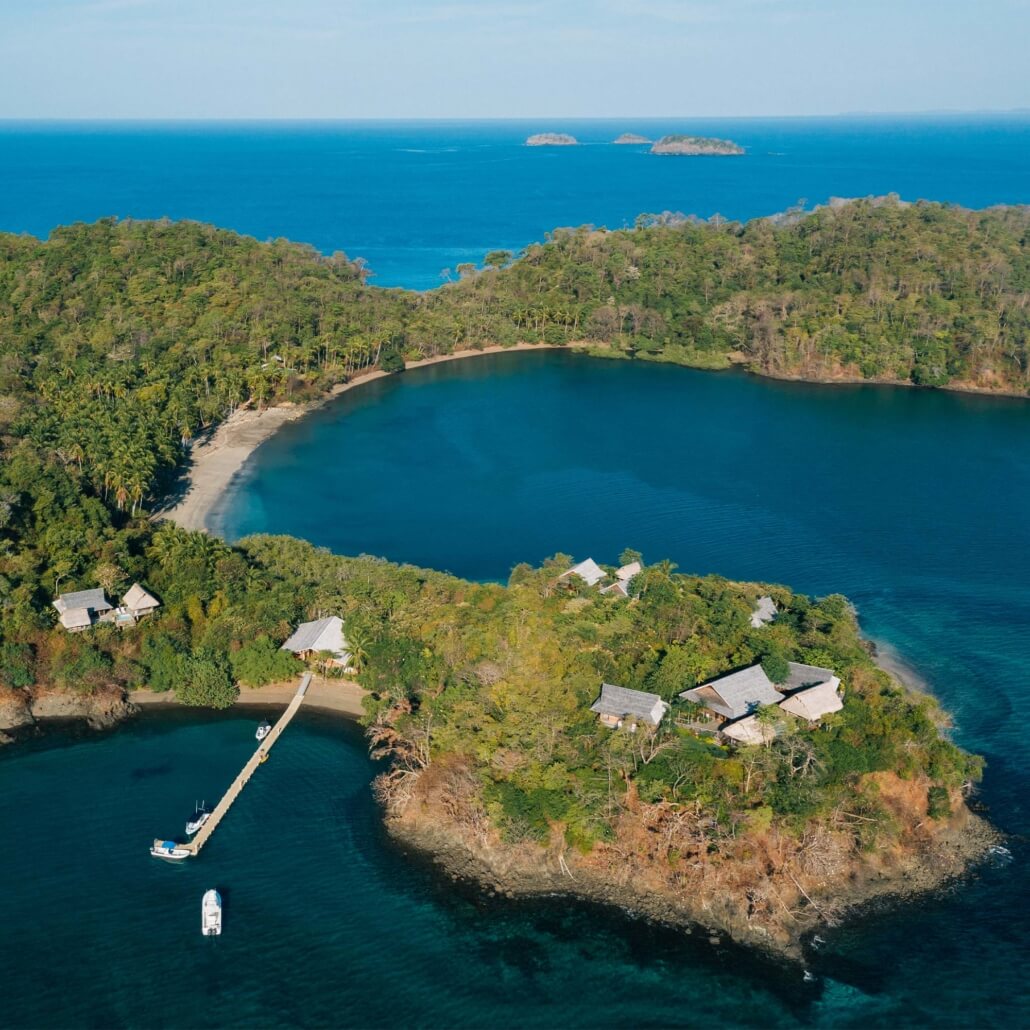
In order to enable different batteries at different states of health to be managed as a unified energy storage system, the BMS in the Unigy II batteries were replaced with the Nuvation Energy BMS, which is able to be programmed to manage cells of different capacities, chemistries and SOH as a single system.
"Nuvation Energy was pleased to provide the BMS and a customized energy controller for the Islas Secas augmentation. Our configurable BMS can support batteries of different SOH, manufacturers and chemistries by simply altering configuration settings. This enables a seamless augmentation of existing energy storage systems, and greatly simplifies future battery changes."
Michael Worry, CEO, Nuvation Energy
The island microgrid is powered by a 355 kW photovoltaic (PV) array, which powers all appliances and systems on the island during the day, switching off at night to utilize silent battery power.
The batteries are charged by the solar array during the day, providing a reliable and renewable 1.5 MWh energy storage solution. The island energy storage system initially installed 18 stacks of East Penn Unigy II lead batteries. When the eco-resort wanted to expand the capacity of the system by 500 kWh, they utilized Nuvation Energy’s BMS to install new additional lead batteries.
The augmentation of the existing system with 9 stacks of GS Yuasa’s batteries was a straightforward process as Nuvation’s BMS is able to be used across multiple battery manufacturers.

The eco-resort utilizes an energy management system developed by Nuvation Energy to prioritize the cycling of the new and previous batteries respectively. The Nuvation Energy BMS manages both sets of batteries, which have different charge/discharge profiles, as a single unified platform.
This island project demonstrates the vital role advanced lead batteries and battery management systems are playing across the globe in facilitating the harnessing of clean, renewable energy by pairing it with battery energy storage.
| Battery specification | East Penn Deka Unigy II + GS Yuasa SRL 1000 |
| BMS | Nuvation Energy |
| Battery bank voltage | 48V Nominal |
| Rated power in kW | 162 kW |
| Energy in MWh | 2.1 MWh |
| Inverter | SMA |
| System Integrator | Civic Solar |
Nuvation Energy provides battery management systems (BMS) and energy storage engineering solutions to battery manufacturers and system integrators. They are headquartered in Sunnyvale, California and have a design center in Waterloo, Ontario, Canada. Nuvation’s utility-grade battery management solutions are used worldwide in various types of energy storage systems.

One of the largest customer-serving energy storage projects in world, located in Wuxi, China, has been powered by lead-carbon batteries since August 2017.
The 20 MW project provides time shift/storage services for a modern industrial zone serving more than 50,000 people working in industries including precision electronics, communications and manufacturing.
"This project demonstrates the diversity of advanced lead batteries for energy storage. Lead batteries are used across the global energy storage sector, and the Wuxi Industrial Zone project is an example of the fantastic option lead-carbon batteries offer for large-scale energy storage projects.”
Dr Alistair Davidson, Director, Consortium for Battery Innovation

Technical Specification
Delivering 160 MWh, the battery system used for this project consists of 107,520 lead-carbon batteries provided by Narada Power Source.
Developed in partnership with CBI, the REXC-1000 batteries offer extended cycle life in shallow service, ideal for energy storage systems.
The energy storage system includes:
Through providing time shift/storage service, the 20 MW project improves the utilization of energy in the power system by balancing peak load.
Narada’s lead-carbon technology offers a reliable, cost-effective and sustainable energy storage solution for this large-scale project. This is combined with facilitating electricity bill savings for the industrial zone due to optimization of energy use in different time periods.

Technical Summary
| POI | 10 kV |
| Plant Power | 20 MW |
| Storage Tech | Lead-carbon |
| Storage Cap. | 160 MWh |
| Plant Design Life | 10 years |
| Architecture | 80 sets of 250 kW / 2 MWh battery banks |

Narada was established in Hangzhou, China in 1994 and has evolved into one of the world’s leading battery suppliers. The company majors in valve-regulated lead batteries and lithium batteries for various applications.
The renewable energy storage section is a major market for the company and Narada has an increasing presence in international markets.
Narada’s lead-carbon batteries have been extensively deployed in China and globally for peak shaving, off-grid wind power installations, and in telecommunications hybrid solutions and energy storage model datacenters.

British Columbia, Canada
For more than 10 years, a First Nation community in British Columbia have achieved their energy needs through a renewable system supported by advanced lead batteries for energy storage.
With no power grid connection, 200 Xeni Gewt’in First Nation members spread across the Nemiah Valley in Canada have combined solar arrays with Surrette’s advanced lead batteries for clean, reliable power.
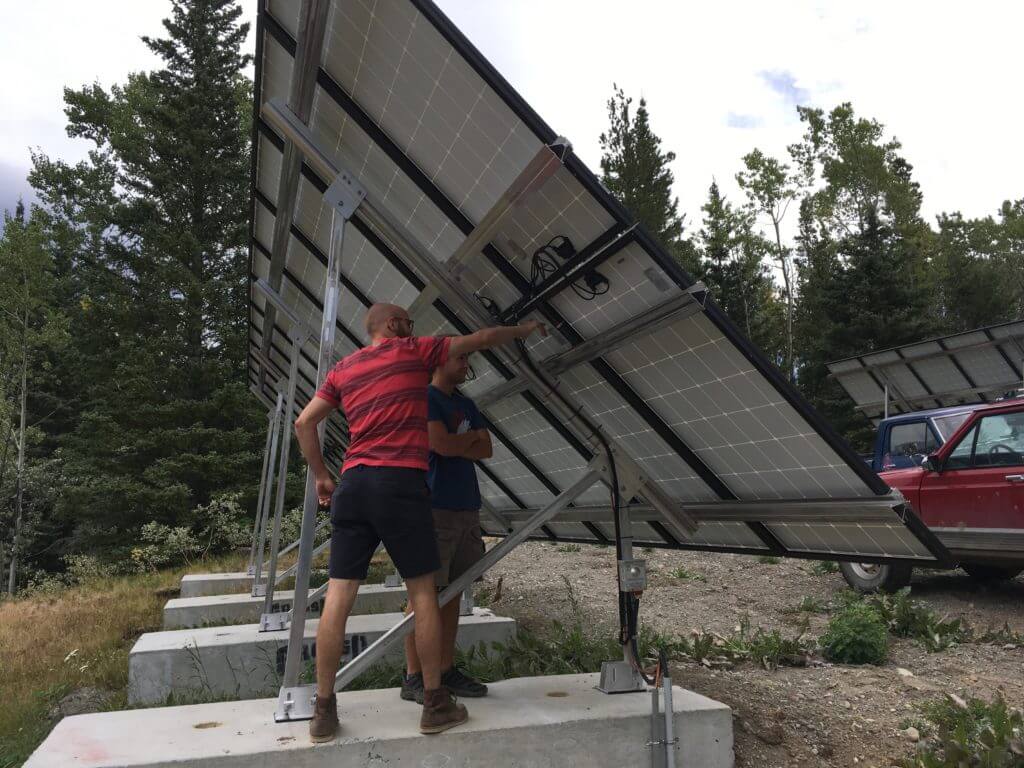
Technical Specification
Since 2006, four residential off-grid PV hybrid systems have been in continuous operation, providing more than 13,000 kWh of energy since installation.
The hybrid systems consist of a 2 kW solar PV array combined with 48V 4000Ah flooded lead batteries provided by Surrette Battery Company, a Canadian battery manufacturer.
The systems were specifically commissioned and designed to meet a predicted 240/120V AC residential load requirement of 5 kWh a day.
The hybrid system also features a 5.5 kW propane genset for supplemental energy in low-sun winter season, however due to the large PV size, the genset is rarely used.
The successful energy storage system has reliably provided clean energy for more than 11 years, averaging 3.3 kWh per day.
“Rolls batteries provide energy storage solutions in small to large-scale renewable applications around the world. Many of these battery banks, like those installed in the initial Nemiah Valley hybrid system projects, have been in operation for more than a decade which is a testament to the long-term efficiency, reliability and cost savings of well-designed off-grid systems.” Jeff Myles, Marketing Manager, Rolls Battery Engineering
2008 installation
Due to the success of the original systems, three additional PV hybrid systems were commissioned by the community in 2008, designed to be locally reproducible by community members.
Featuring 1kW of PV combined with 400Ah of flooded lead batteries, these additional energy storage systems have been operating continuously since installation.
New system design in 2017
Building on the success of the decade-old energy storage systems, seven new hybrid systems were commissioned for delivery to the Gewt’in community in 2017.
These larger systems feature a 6 kW PV array, 1000Ah of flooded lead batteries and a genset, and were installed in a robust 10’ shipping container.
Whilst providing a secure and protected enclosure and voltage-controlled exhaust fan for the energy storage system, the new design also incorporated a remotely accessible monitoring system with a web-based interface, allowing performance assessment of the system.
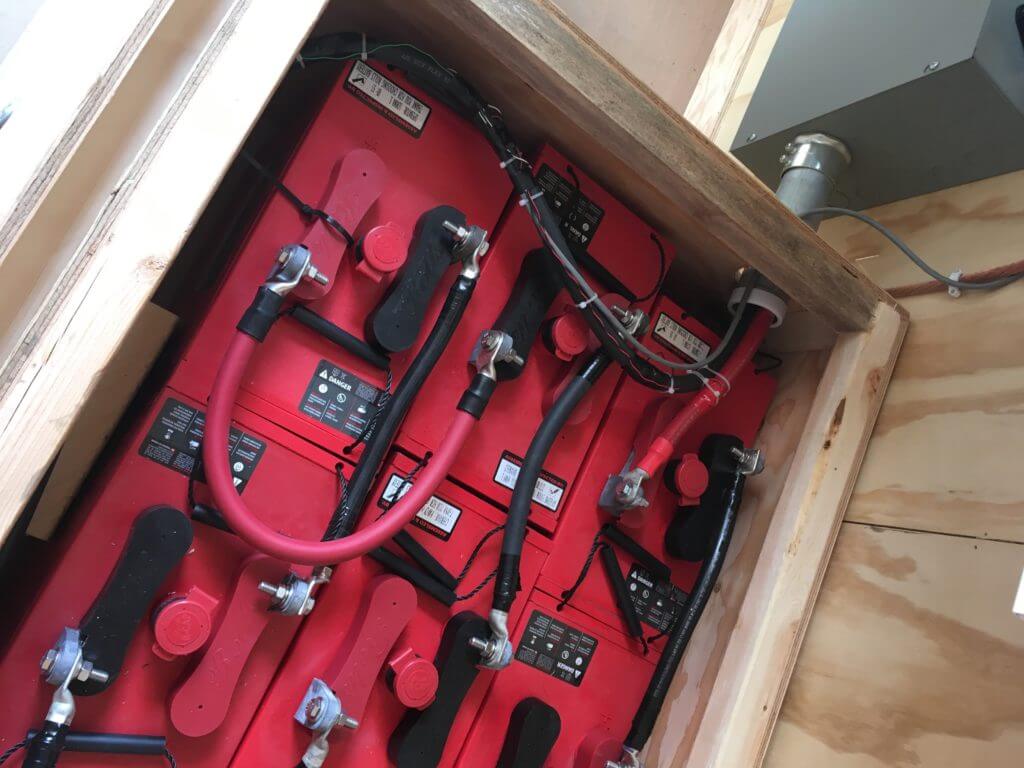
Sustainable technology
Surrette’s flooded batteries have provided a reliable, cost-effective and sustainable energy storage system, combined with an enhanced ability to withstand extreme weather conditions experienced by the region.
Fully recycled at end-of-life, advanced lead batteries offer an economical and sustainable advantage for communities utilizing renewable energy storage systems.
About the Company
Rolls Battery Engineering is a long-established Canadian manufacturer of industrial lead batteries and is the brand name of Surrette Battery Company. They supply flooded and valve-regulated lead batteries for many applications and specialize in renewable energy storage.

Located in a remote jungle area in western Colombia lies Ancandia, a municipality not connected to Colombia’s electrical grid. Residents were only able to access unreliable electricity for a few hours each day through a diesel generator.
In 2015 five solar hybrid microgrids were built in the region to provide reliable, clean energy, supported by advanced lead battery storage.

Trojan’s advanced lead batteries were chosen to provide energy storage for the project, with more than 400 households in the region now having clean, affordable and reliable energy.
With improved performance and lifetime when operating at Partial State-of-Charge (PSoC), Trojan’s Industrial Line advanced lead batteries with Smart Carbon are an ideal option for solar applications:
The battery bank configuration is 48V and 24V, and the batteries have a lifetime of 17 years, suiting the project requirement of a 15-year duration.
Working with system integrator Tecmac Ingenieria, a solar system with a capacity of 191 kWp was installed. The solar modules are comprised of 250W Trina Solar panels.
Bi-directional Sunny Island inverter-charges with Sunny Boy inverters are used for the five solar microgrids installed in the project.
Trojan’s advanced lead batteries have provided a reliable energy storage solution with the lowest levelized cost of energy, combined with the ability to withstand the region’s harsh conditions.
"The durability, safety and reliability of advanced lead batteries make them ideal options for microgrids. Projects such as the Colombian solar microgrids are quite literally empowering communities who were previously unable to access electricity.”
Dr Alistair Davidson, Director, Consortium for Battery Innovation
| Battery specification | 288 + 12 batteries Advanced lead deep-cycle with Smart Carbon |
| Capacity | 2,105Ah (288) C100 695Ah (12) C20 |
| Overall voltage | 48V + 24V |
| Rated power in kW | 39 kW |
| Power in MWh | 2.4 MWh (48V system) / 50 kWh (24V system) |
| Project duration | 15 years |
| Microgrids | 5 |
| Lifetime of batteries | 17 years |
| Households powered | 400+ |
Trojan Battery Company is the world’s leading manufacturer of deep-cycle batteries. With HQ in Sante Fe Springs, Trojan has four plants in California and Georgia.
Products range from batteries for golf and utility vehicles, transportation, floor machines, aerial platforms to renewable energy and marine applications. The company has a strong commitment to research and development and is a leader in advanced lead batteries.

Located in a small coastal town in Maine with a population of 2,000 people is the first non wires alternative (NWA) application of battery based storage for utility infrastructure in the US , using advanced lead batteries.
Since 2015, Boothbay’s electricity grid, which experiences increased peak load during the summer’s major tourism surge, has been reliably supplied by a 0.5 MW energy storage NWA solution.
Working with GridSolar, Convergent designed and engineered a 0.5 MW / 3MWh energy storage facility, located adjacent to the radial 34.5 KW sub transmission line that feeds the Boothbay peninsula.
The facility is connected to a local substation that serves the peninsula’s load pocket, allowing Convergent to alleviate 500 kW of strain on the upstream feeder during summer peak loads.
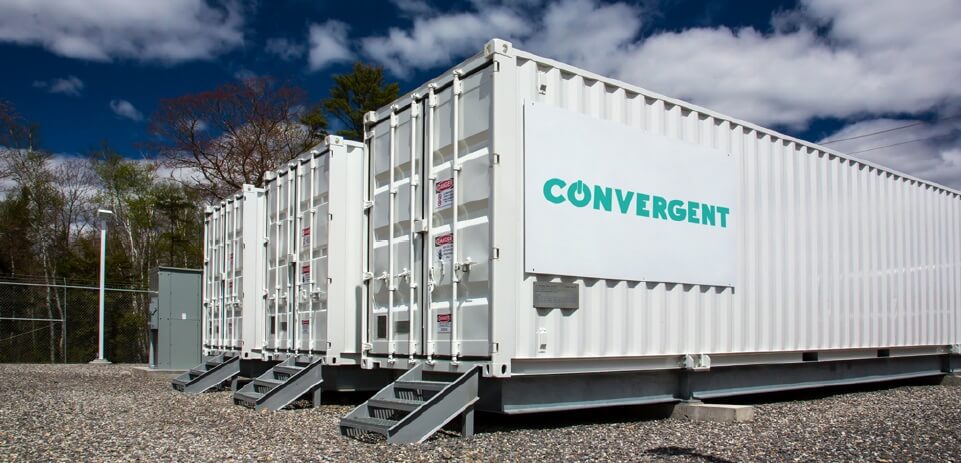
With a project specification of 0.5 MW for 6 hours, C&D Technologies advanced lead batteries were used for the project , a cost effective, reliable and robust technology.
The NWA system is on call to provide voltage support to the region from 9am-9pm during peak summer months, with a guaranteed response time of under five minutes.
“By utilizing advanced lead batteries and a versatile design , Convergent Energy and C&D Technologies were able to provide the people of Boothbay Harbor with a more cost effective, reliable and safer energy storage solution than alternative technologies. The modular solution allows for scalability in the future without costly infrastructure conversions."
Ken Sigman, Chief Commercial Officer, C&D Technologies
The system maintains 100% uptime during peak summer months, demonstrating the reliability and responsiveness of energy storage as a utility resource.
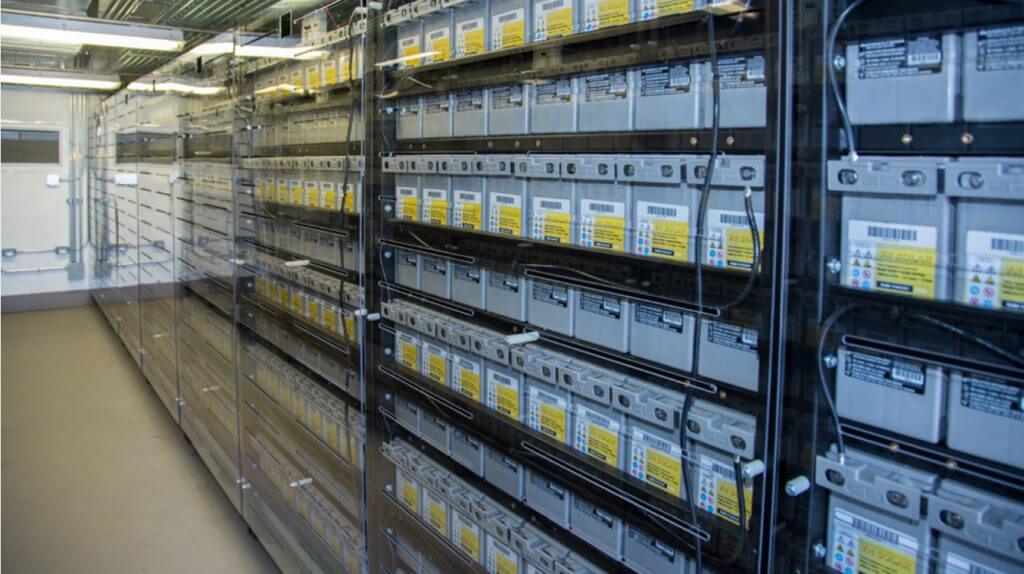
C&D Technologies, Inc. is a technology company that produces and markets systems for the power conversion and storage of electrical power, including industrial batteries and electronics. This specialized focus has established the company as a leading and valued supplier of products in reserve power systems and electronic power supplies.

Convergent Energy + Power is the leading independent developer of energy storage solutions in North America Convergent deploys state of the art technology to significantly lower commercial and industrial
customers’ electricity bills and provide utilities with cost effective grid solutions.

View our short video about the project here
As the growing demand for renewable energy results in an increased need for battery energy storage, a hybrid project in Aachen has been testing different battery technologies since 2016.
With optimized high current capability and long cycle-life expectancy, Exide Technologies’ advanced lead batteries are one of the key storage technologies featured at the 5MW M5BAT project.
With the objective of testing the technical and economic viability of different battery technologies, advanced lead batteries at M5BAT are playing a central role in the strive to optimize battery performance for grid stability and integrating renewables into the energy market.
"Based on an intelligent energy management system and low procurement costs, lead batteries are a good solution for high energy loads.”
Jeanette Münderlein, Research Associate, RWTH Aachen University
The OCSM battery system at M5BAT consists of 600 x 16 OCSM 2320 LA, with a total AC capacity of 1.3 MWh. OCSM batteries offer maximum performance and cycle stability due to Copper Stretch Metal (CSM) technology.
Long-term efficiency of the battery system is achieved via a water replenishment system and electrolyte circulation. The OCSM system is divided into two strings which can be operated separately from each other. One string consists of 300 cells, connected in serial.

The second advanced lead battery system installed at M5BAT consists of VRLA gel technology, specifically optimized for high cyclic loads. The electrolyte is fixed in gel, and no maintenance, such as water top-up, is required.
The OPzV system unit is assembled of two strings with a total AC capacity of 1 MWh. The first string consists of 306 x A602 1960C Solar batteries and the second one consists of 616 x A602 1130 Solar batteries.
Both strings can be operated separately from each other. One string is installed within the building and the other in a container.
The M5BAT hybrid energy storage project demonstrates that different battery technologies, such as lead and lithium, can operate well together.
The advanced lead batteries used in the system are particularly suited for high energy loads.
The development of an intelligent battery and energy management system (EMS) was necessary to get operation functionality. All operation data is monitored and used to improve the EMS.

RWTH Aachen is the operator of the battery storage system and is participating in the M5BAT project in conjunction with several other institutes. The project is being coordinated by the department of Professor Sauer and is part of the university’s Institute of Power Generation and Storage Systems (PGS).

Established in 1888, Exide Technologies is committed to providing world-class stored energy solutions that lead the industry in quality and performance, drive customer results and make a difference in people’s lives.

View the project video in our 'Batteries in Action' Series here
Located in Bennewitz, Saxony, is a large-scale, 25 MWh lead-carbon battery energy storage system.
Narada, one of China’s leading battery energy storage system suppliers partnered with energy storage operator, Upside Group, in a 16 MW frequency regulation project for the German power grid.
The 25 MWh installation has been connected to the local utility grid since May 2019.
"As Narada deploys more and more projects in Germany and worldwide, this is an exciting step forward for our company and our innovative technology, bringing us further into the energy storage market.”
Zhu Baoyi, CEO, Narada

The battery system houses more than 10,500 individual battery cells with nine battery inverters, in 18 containers.
The batteries used are 1200 Ah lead-carbon valve-regulated provided by Narada.
Power is delivered through nine SMA Sunny Central Storage Inverters, supplied by SMA Solar Technology, each capable of delivering 1.8 MVA.
SMA also installed a Hybrid Controller for optimized battery charging and discharging.
The coordinated system solution allows optimal control to provide grid relief for the entire region, and the stabilization of the Central European utility grid.
All the battery cells are individually monitored to ensure any deviation in performance is detected and corrected before there is a problem. The battery is operated at partial state-of-charge to that it can accept and deliver charge at all times.
Each container has 588 units 2 V cells which are installed on site.
The Narada lead-carbon technology used was developed in partnership with CBI, and the REX Carbon cells have a calendar life of 15 years and an extended cycle life in shallow cycle service.
They have been extensively deployed in China for peak shaving, off-grid wind power installations, and in telecommunications hybrid solutions and energy storage model datacenters.

| POI | 20 kV |
| PCR Power | 16 MW |
| Plant Power | 16.4 MW |
| Storage Tech | Lead-carbon |
| Storage Cap. | 25 MWh |
| Plant Design Life | 20 years |
| Architecture | 9 MVPS 18 Storage |
Narada was established in Hangzhou, China in 1994 and has evolved into one of the world’s leading battery suppliers. The company majors in valve-regulated lead batteries and lithium batteries for various applications.
The renewable energy storage section is a major market for the company and Narada has an increasing presence in international markets.

There is an increasing need for regulation services due to the large-scale integration of intermittent wind and solar generation which affects the physical operation of the modern grid.
The grid scale energy storage system, operational since 2012, provides 3 MW regulation services on the grid of PJM Interconnection, which is the largest of 10 Regional Transmission Organisations / Independent System Operators in the USA.
Regulation services are necessary to provide fine tuning in real time for the network to match supply and demand and keep a constant frequency. The PJM energy storage project demonstrates the efficiency of UltraBattery® technology for managing regulation services. East Penn has shown that lead technology is not only capable of continuous cycling, it can also equal or outperform any other battery technology in grid frequency regulation, one of the most demanding applications for any battery.
The 3 MW UltraBattery Energy Resource is implemented both in a building and in a containerized format, to demonstrate flexibility in approach for prospective adopters.
Using four strings of UltraBattery cells, it connects to the grid from inside the East Penn Manufacturing site in Pennsylvania.
The project provides continuous frequency regulation services bidding in to the open market on PJM, and the system responds to PJM’s fast response signal (see below). The project also provides peak demand management.
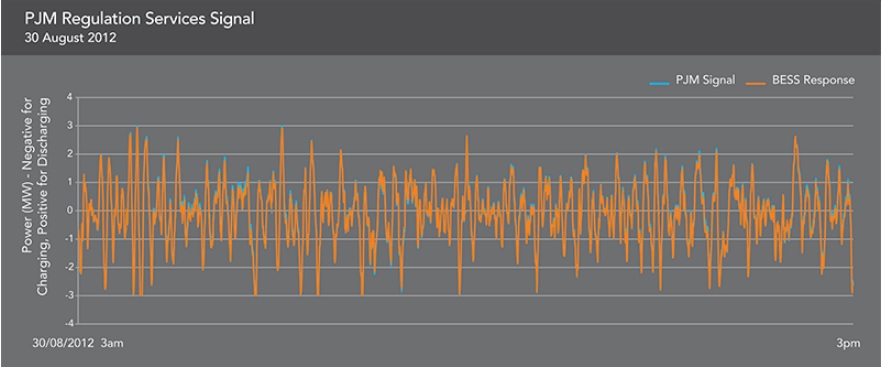
For frequency regulation services, the batteries roam in approximately 40% Partial State-of-Charge band. The system implements an application that follows the PJM signal and maintains the State-of-Charge (see below).

The frequency regulation services system tracks the string voltage and individual voltage of the cells, which are maintained in conservative bands to extend longevity (see below).

East Penn is located at Lyon Station in Pennsylvania and is the largest single-site battery manufacturing operation in North America. The 520-acre campus uses the most technically advanced methods to manufacture batteries for automotive, motive power, reserve power and energy storage.

Download the full case study here.
Located in Europe’s leading eco-centre is a mini-grid system supported by lead batteries.
The Centre for Alternative Technology was set up 45 years ago as a place to demonstrate more sustainable living with less wasteful use of resources and energy.
With 90 staff and a host of volunteers, CAT is an educational charity that researches and communicates practical solutions for a sustainable future including the use of renewable energy.
“The battery system is an essential element of the CAT electrical system, providing us with a reliable back up for this busy site.” Centre for Alternative Technology

Technical Specification
The energy storage project utilizing lead batteries, forms a key element of the sites electrical system has been designed for low energy consumption whilst being used. Electricity comes from a range of renewable sources on site: solar PV panels, a hydro system and wind turbines.
The 30 kW backup system comprises:
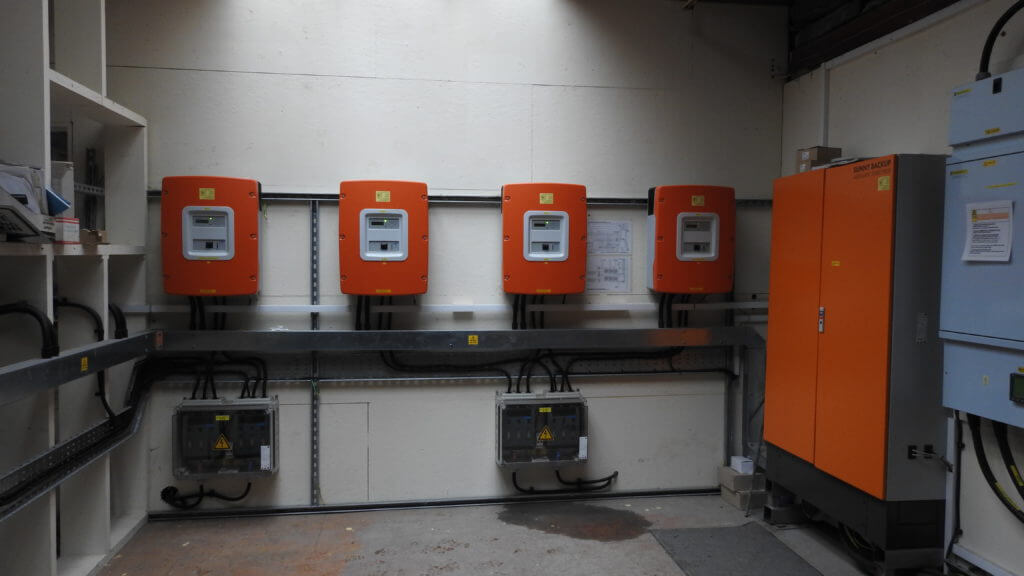
Fitting in with the Centre’s energy-efficient and sustainable ethos, the system uses low-embodied-energy materials such as sustainable limber.
In normal operation, the renewable generators provide power for the site and any excess power is exported to the national grid.
If power failure occurs, the CATs electricity system is isolated from the grid and continues to operate as an island system.
The Sunny backup inverters regulate power generation according to demand, ensuring efficient and continual operation of renewable generators and maintaining power to essential site loads.
The lead battery backup is large enough to provide at least 3 hours of power for the site, in the event of no sun, wind or biomass.
About the Company
HOPPECKE Batteries is the largest producer of industry battery systems in European ownership.
Since 1927, the family company has been developing and producing lead acid batteries in Germany, and thanks to their own recycling plant, 99% of the used battery material can be recycled.
With the development of marketable, forward-looking energy storage solutions, HOPPECKE makes an important contribution to solve the societal challenges that result from the implementation of global climate protection goals.
“Our products and services help contribute to the achievement of climate change objectives.” HOPPECKE Batteries

In the village of Satrokala in Madagascar, two renewable energy storage systems, supported by lead batteries, have been installed by Tozzi Green.
A leading player in sustainable rural electrification, Tozzi Green’s installation in Madagascar generates electricity through a combination of wind turbines and solar panels.
The renewable energy generated provides public lighting and more than 20,000 litres of fresh water for the 1,500 residents of Satrokala every day. It also supplies the facility of JTF Madagascar with electricity and irrigation for their offices and warehouses.
“Energy is provided for numerous educational facilities, a sports field and a range of public buildings such as city hall, a bank and a town hall.” Tozzi Green

Technical Specification
The first system, installed in Satrokala in 2013, was rated 15 kW/ 57.6 kWh. Energy was generated through a combination of a 10 kW TN535 wind turbine and a 1.5 kWp PV plant.
The battery energy storage system was based on OPzS 1200 Ah C10 batteries for a total capacity of 2400 Ah at 48 V, allowing demand for energy to be met throughout the day and night.
As energy demand increased in the years since 2013, the installation system was upgraded by Tozzi Green. A new 60 kW wind turbine was added, and the storage system is now rated 600 kWh. The energy storage capacity is now 12480 Ah at 48 V, using RA12-260 gel batteries, provided by Ritar Power.
An ISO 40’ container (pictued) contains the storage batteries and static converters.

Technical Summary
| Battery specification | RA12-260 gel batteries |
| Capacity | 12480 Ah |
| Overall voltage | 48 V |
| Wind turbine | 10 kW + 60 kW |
| PV plant | 1.5 kWp |
| Available Stored Energy | 600 kWh |
“Thanks to the Tozzi Green off-grid system, the Satrokala community can continue fundamental activities contributing to development, such as running the medical center. The center carries out free medical examinations for adults with 75,000 visits a year, and 11,000 children treated annually.” Tozzi Green
About the Company
Tozzi Green is a specialist company for the development of plants and generation of energy from renewable sources.
Since 2006 Tozzi Green has been investing in agriculture for energy and alimentary purposes in Italy and abroad.
This is based on the strong conviction that the combination of renewable energy, rural culture, integration, tradition, scientific research and innovation is the sustainable path for the future of the planet.
Tozzi Green’s project in Madagascar started and developed from the synergy between different experiences and cultures, with the purpose of helping business and the region grow economically and socially.

One of the largest off-grid solar systems in the world, producing 1 MW of power, this vast PV array coupled with advanced lead battery energy storage, is located in the mountains of Bamyan, Afghanistan, famously known for its Giant Buddha statues.
Part of the Renewable Energy Program funded by New Zealand’s government, the project provides 24-hour power to 25,000 homes, businesses, hospitals and government officers for this central mountainous region.

"An entire community depends on Crown batteries – to power their homes, businesses, schools, and more. Bamyan’s extreme conditions and remote location ruled out most battery options, and this system’s components had to be engineered to last.” John Connell, Vice President , SLI Products Group
Technical Specification
Involving a mix of solar, lead battery storage and diesel backup, the renewable energy project provides sustainable and cost-effective electricity to local people. Prior to installation, residents relied on small diesel generators, domestic solar panels or no power at all.
The PV array generates solar energy and is powered in times of bad weather by the advanced lead battery storage system.
The project uses Crown Battery’s flooded lead batteries with a capacity of 38 strings at 4,500 Ah 48 V DC.

The system uses Sunny Island inverters:
Solar module:
Diesel back-up generator:
Power ratio:

Due to its mountainous location, subject to extreme temperatures as low as -25°C in the winter, advanced lead batteries were chosen for their reliability and robustness.
Employees of the local utility supplier in Bamyan were trained to continue to operate the system after installation.
About the Company
Crown Battery has corporate and manufacturing operations in Fremont, Ohio.
Crown has 12 sales and distribution offices throughout North America, 600 employees and a network of authorized business partners, distributors and dealers throughout the Americas, Europe, Africa, Asian-Pacific, Australia and New Zealand.
Crown’s operating principle – “The Power Behind Performance” – represents Crown Battery’s commitment to providing power to millions of people around the world – power that makes life easier, and raises standards of living, health and safety for the communities we serve.

On a plain 4,700 metres above sea level in Tibet, a vast 20 MWh solar energy farm is soaking up the sun’s rays to help feed China’s ever-expanding demand for energy.
The technology behind this state-of-the-art renewable energy plant is a bank of lead-carbon batteries which store and supply electricity generated by the photovoltaic panels directly into the Chinese grid.
"The plant in Tibet is providing quality electricity in a controlled and stabilised environment, acting as a trailblazer for renewable energy storage systems elsewhere. This is clean energy, with reliable and long-lasting storage operating at high altitude.” Lucie Yi, Deputy Chief Engineer, China Shoto Energy Storage
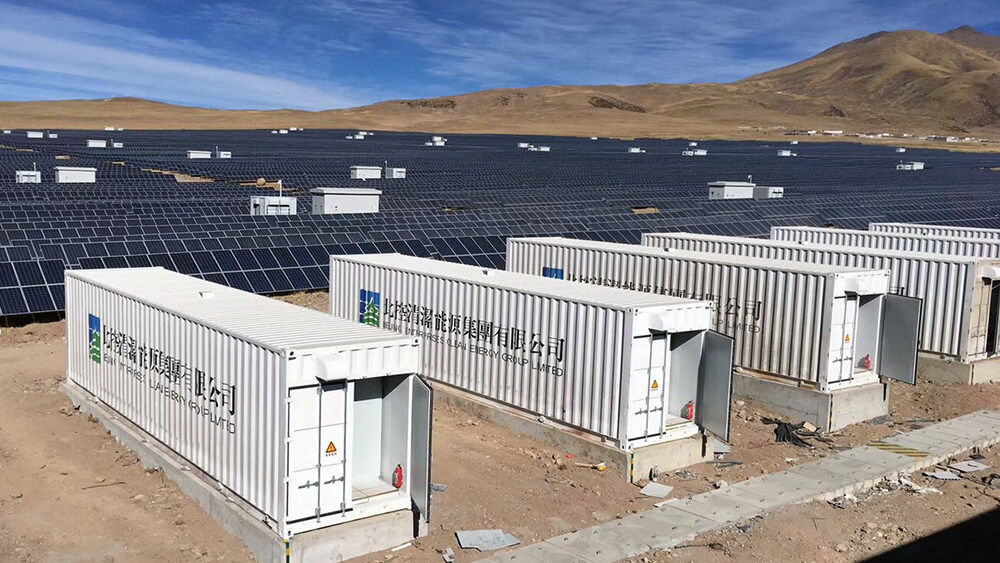
Technical Specification
With up to 14 hours of sunlight a day in summer months, the plant produces 30 MW of solar power, supported by 20 MWh of energy storage.
The system uses lead-carbon battery technology because of its robustness in harsh conditions and reliable operation at temperatures down to freezing point.
The installation uses 9,600 of Shoto’s long life lead-carbon batteries, housed in 16 40 ft ESS containers. The LLC-1000 batteries can reach 4,000 cycles at 70% depth of discharge.
The batteries are capable of being fully recycled at end-of-life, making the process of generating, storing and distributing electricity at the plant completely sustainable.
“The use of carbon and other additives, new grid alloys and active materials have resulted in significant improved shallow cycling performance and energy density of advanced lead batteries. It has also demonstrated an increase in cycle life and calendar life, making it an excellent option in renewable and utility energy storage applications, including at high altitude.” Dr Alistair Davidson, Director, Consortium for Battery Innovation

About the Company
Shoto is a leading integration service provider of green energy storage in the era of big data, using cutting-edge energy technology with customers around the world.
Shoto provides a complete series of energy storage solutions and solid green energy security for the telecommunications industry.
For the power industry, Shoto is a core hub that creates future smart grid networks. Shoto also supplies new, clean and high-efficiency power energy for the transportation industry to facilitate green travel.
Shoto is active in the recycling industry for lead batteries, making energy recyclable and renewable whilst also reducing loss of resources.

The Isle of Muck, a 2-mile long island lying off the west coast of Scotland is home to 38 people.
With no mainland grid connection, the existing wind turbine and diesel generator system dating from 2000 was upgraded in 2013 with new solar panels, wind turbines and a lead battery energy storage system.
The system was designed to allow the island to support 24-hour power despite variable output from renewable energy sources. Providing 150 kWh a day, the system now supports 20 domestic properties, a school, community hall and three small workshops.
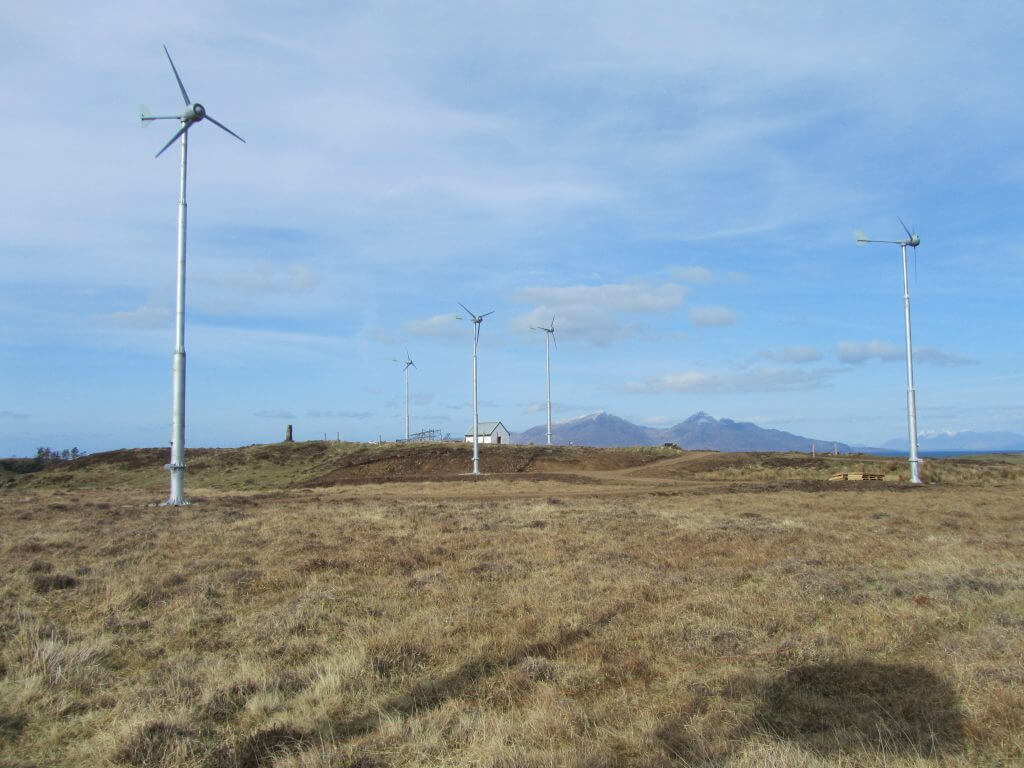
“The Isle of Muck system has offered residents dependable uninterrupted power for several years. We're pleased that our Rolls deep cycle batteries have been chosen for this and other island microgrid systems in the region.”Jeff Myles, Marketing Manager, Rolls Battery Engineering
Technical Specification
Switched on in March 2013, the new system consists of three 3-phase clusters each with 3 x Sunny Island 5 kW inverters each with a 53 kWh Rolls 48 VDC deep cycle battery bank.
The entire installation comprises three battery banks provided by Rolls Battery Engineering, each consisting of 24 x 4KS25P Rolls deep cycle batteries. Each battery bank is connected to a Multicluster Box 12.
The batteries give 48 V DC with a capacity of 2242 Ah. This is approximately total for the whole system of 150 kWh useable capacity to 50% depth of discharge.
The inverter system uses one of two back-up diesel generators, 40 kW or 25 kW, if the batteries require charging.
Six 5 kW wind turbines and a PV array with an output of 33 kWp complete the system.

Installation
The new system was designed and installed by Wind and Sun (www.windandsun.co.uk) along with the battery store, PV array and wind turbines. Evance Wind Turbines were responsible for the turbine installation.
The renewable energy sources are connected using Sunny Island inverters which control battery charging when energy is generated from wind or solar. It also manages frequency and voltage.

Technical Summary
| Battery specification | 24 x 4KS25P Rolls deep cycle batteries |
| Capacity | 2242 Ah |
| Inverters | Wind: 6 x SMA WB-5000A PV: 6 x SMA SMC-5000A 9 x SMA Sunny Island SI-5048 inverter/chargers |
| Wind Turbines | 6 Evance R9000 5 kW wind turbines |
| PV array | 132 REC Solar 250PE 250 W photovoltaic modules (33kWp in total) |
| Diesel Generators | SEE Contracting installed 2 new diesel generators |
| Overall Power Output | 15 kW |
| Available Stored Energy | 150 kWh to 50% DoD |
About the Company
Rolls Battery Engineering is a long-established Canadian manufacturer of industrial lead batteries and is the brand name of Surrette Battery Company. They supply flooded and valve-regulated lead batteries for many applications and specialize in renewable energy storage.

Dorrigo, New South Wales, Australia
With a 36 kW energy storage system commissioned in 2016, the Cork Trust Memorial Medical Centre in Dorrigo, New South Wales was the first energy autonomous medical center in Australia.
Located in a high-altitude coastal region, the project, which currently consists of a medical center and three display homes, will eventually include 43 independent housing units to accommodate senior residents.
“Designing this system in my home town of Dorrigo has been an exciting project, not only for the financial and blackout protection benefits that these systems derive, but also as a model of what these resilient micro grids mean for the future of embedded generation networks of the world.” Geoff Tosio, Sales Manager, Solar Depot Bellingen

Technical Specification
To power the medical center, a 36 kW grid-connected solar and battery storage system was designed and installed by Solar Depot Bellingen.
The energy storage system consists of 60 x 2 V OPzV batteries provided by Sacred Sun, rated at 1000 Ah. The gel lead batteries, 4.6 tons in weight, can store up to 72 kWh of electricity mainly to store excess solar production for use at night. This stored energy can also be used for back-up during blackout periods.
The system also features three large inverter/rectifiers in a three-phase configuration, made up of 20 kW Selectronic SP 1202 units, 36 kW of
Yingli polycrystalline solar panels and 6 x ABB 6 kW inverters.
There is currently 36 kW of PV generated with room to expand up to 90 kW. It is expected that the solar and storage system will generate up to 20% more power than the building’s average annual use.

Technical Summary
| Battery specification | 60 x 2 V OPzV Sacred Sun batteries |
| Capacity | 000 Ah |
| Inverters | 3 x 20 kW Selectronic SP 1202 inverter/rectifier units6 x ABB 6 kW inverters |
| PV array | 36 kW Yingli polycrystalline solar panels |
| Overall Power Output | 36 kW |
| Available Stored Energy | 72 kWh |
About the Company
Shandong Sacred Sun Power Sources is an international high-tech enterprise founded in 1991, dedicated to providing stored energy solutions for industrial applications worldwide. They specialize in designing, manufacturing and distributing reserve power and motive power batteries.
Reserve power batteries are used in telecom and utility industries, uninterruptible power supplies, and numerous applications requiring stored energy solutions including solar and wind renewable energy.

Large Scale Microgrid in Nigeria, Africa
Fostering Economic Activity and Increasing the Standard of Living
A case study that demonstrate the power of advanced lead battery technology in supporting solar microgrid installations in African communities with no access to the grid.

Bisanti, Nigeria
Trojan partnered with Green Village Electricity (GVE) Projects Limited, a leading PV Solar Mini-Grid Developer in West Africa to electrify a village with 260 households and 60 businesses in Nigeria. The project supported street lights along the main street of the village, providing enhanced security at night, extended business operating hours and extended play time for children. The solution resulted in a 50% reduction in energy related expenditure and an 80% reduction in malaria cases.
“Trojan Battery provides clean and reliable energy storage that enhances the way people live and work around the world. Having reliable electricity provided by microgrids are key to expanding the economy and improving the quality of life of local communities.” Ivan Menjak, Director of Global Product Solutions for Trojan Battery
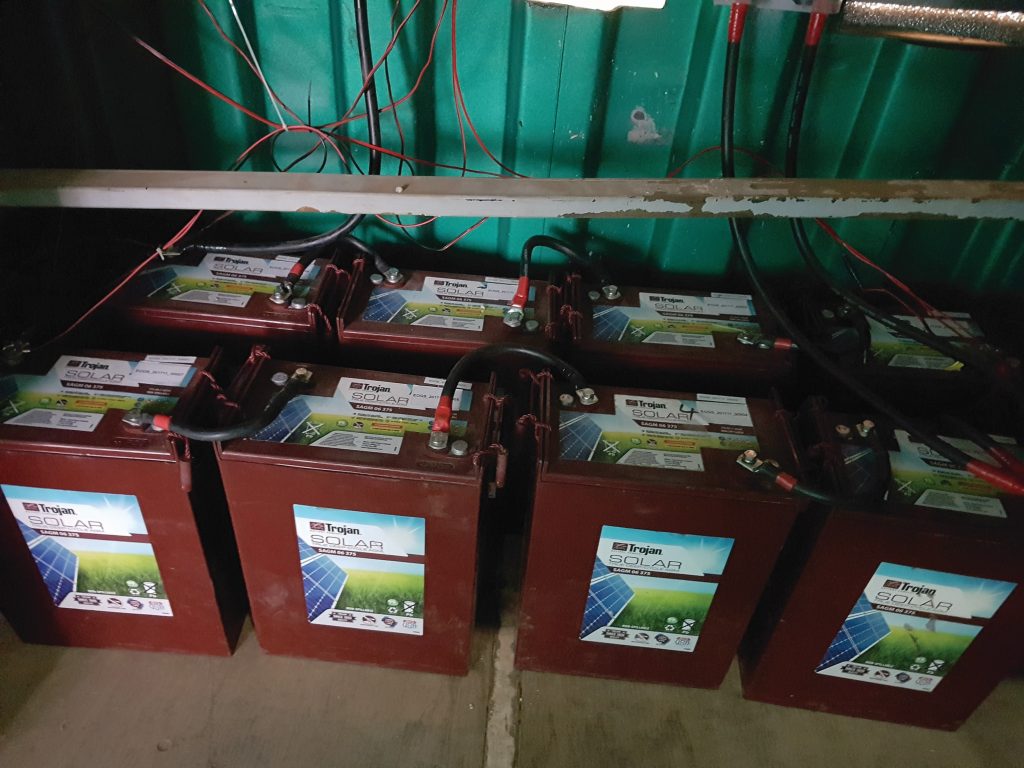
Technical Specification
About the Company
Trojan Battery Company is the world’s leading manufacturer of deep-cycle batteries. Trojan is headquartered in Santa Fe Springs in California and has four plants in California and Georgia. Products range from batteries for golf and utility vehicles, transportation, floor machines, aerial platforms to renewable energy and marine applications. The company has a strong commitment to research and development and is a leader in advanced lead batteries.

Remote Island Grid Energy Storage
Lifuka, Kingdom of Tonga
Lifuka is a 4.4 square mile island in the Kingdom of Tonga. Previously receiving power exclusively from diesel generators, the Kingdom contracted CBS Power Solutions to deliver a renewable energy storage system that meets the government’s mandate to obtain 50% of grid power from clean energy. CBS installed a solar + storage microgrid in Lifuka to reduce the island’s dependence on diesel generators.
The project began in 2016 and was completed in 2017. Nuvation Energy installed a NuvationBMS™ High-Voltage Battery Management System that would provide precise State of Charge (SOC) information to the Siemens power conversion systems (PCS) to help manage the charge and discharge process. The BMS also provides remote access to battery performance data.
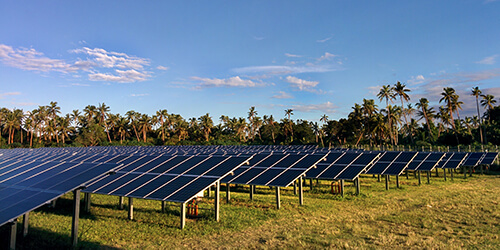
Technical Specification
The project features a solar array and 480 kW / 495 kWh of battery storage. The lead batteries used for the project are 2V valve regulated HOPPECKE cells. The installation of this microgrid reduced the island’s dependence on diesel generators as a primary power source by 50%.
The Nuvation Energy BMS communicates with a pair of 300 kW Siemens inverters and an energy management system that
work together to charge the battery cells from the PV array during the day and provide power to the utility grid at night.
Lead batteries minimized project costs by eliminating the need for the complex fire suppression and thermal management systems often required by more volatile battery chemistries. They provided a cost-effective solution and are recycled at end of life.
While lead batteries are very resilient, continual overcharging and/or over-discharging will significantly shorten their life. A BMS provides battery module level SOC information to the PCS, enabling the PCS to precisely manage the charge and discharge process.

This granular sharing of data between the BMS and PCS can double or triple the life of the lead batteries. Nuvation BMS is also able to disconnect contactors if a fault condition develops that could damage the cells.
In an ESS that contains dozens or hundreds of battery modules, the communications and safety features added by the BMS extend the life of the lead batteries to a degree that recovers the BMS cost many times over during the life of the ESS. Additionally, maintenance personnel are provided with remote access to battery State of Health data, reducing the need for costly “check-up” service calls. The SOH data also includes the granularity needed to identify cells and other components that may need replacement, often before an emerging issue visibly impacts the performance of the ESS.
“The granular sharing of data between the BMS and PCS can double or even triple the life of lead batteries.” Joseph Xavier, Director of Marketing, Nuvation Energy

About Nuvation Energy
Nuvation Energy provides battery management systems (BMS) and energy storage engineering solutions to battery manufacturers and system integrators. They are headquartered in Sunnyvale, California and have a design center in Waterloo, Ontario, Canada. Nuvation’s utility-grade battery management solutions are used worldwide in various types of energy storage systems.

About HOPPECKE
HOPPECKE Batteries is the largest producer of industry battery systems in European ownership.
With the development of marketable, forward-looking energy storage solutions, HOPPECKE makes an important contribution to solve the societal challenges that result from the implementation of global climate protection goals.
Since 1927, the family company has been developing and producing lead acid batteries in Germany, and thanks to their own recycling plant, 99% of the used battery material can be recycled.
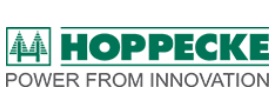
Remote Community Now Has 24-Hour Power
Fair Isle, Scotland, UK
Fair Isle is an isolated Scottish Island half way between the Orkney and Shetland Isles and is one of the UK’s most isolated communities. Until recently, electricity was provided by a diesel generator with some wind power. Night-time blackout was from 11.30pm until 7.30am.
Now, with a solar photovoltaic (PV) system, new wind turbines and a battery installation, the community has been provided with continuous power.
Technical Specification
The batteries were provided by Rolls Battery Engineering and the entire installation comprises seven strings of 48 Rolls 2YS 27 P batteries.
These are flooded deep cycle batteries in single 2 V cells with a capacity of 2,970 Ah at the 100 h rate and offer extended lives in renewable energy systems.
The whole system has 52 kW of PV panels connected to three SMA Sunny 15 kW inverters, three 60 kW Harbon wind turbines and there are two 80 kW diesel generators now used only for backup.
These batteries each feed into an inverter cluster comprising three Sunny Island inverters and a total of 21 inverters provide a power output of 126 kW with 588 kWh of stored energy available.
The whole system is monitored and controlled by an SMA Data Manager which can be remotely viewed as required.
“We are very pleased to have been part of this unique and monumental microgrid installation, and we work closely with global partners to offer a full range of high-quality products for small to large-scale renewable energy applications. The lead batteries chosen for this system will provide years of uninterrupted power and dependable energy storage for the residents of Fair Isle.” Jeff Myles, Marketing Manager, Rolls Battery Engineering

Installation
The solar PV system was installed by Wind and Sun along with the battery, inverters and the control system to integrate the network. Harbon installed the wind turbines and GMI energy installed the back-up generators which replaced older equipment.
Scottish and South Electricity oversaw and carried out electrical works across the island with a new 3.3. kV distribution networks, transformers and controls.
The system also has intelligent controls so that excess energy can be used for water heating and electric storage heaters.

Technical Summary
| Battery specification | 7 strings – 48 Rolls 2YS 27 P Flooded deep cycle in single 2 V cells |
| Capacity | 2,970 Ah 100 h rate |
| System | 52 kW PV Panels |
| Inverters | 3-15 kW SMA Sunny |
| Wind Turbines | 260 kW Harbon |
| Diesel Generators | 2x80 kW |
| Overall Power Output | 126 kW |
| Available Stored Energy | 588 kWh |
About the Company
Rolls Battery Engineering is a long-established Canadian manufacturer of industrial lead batteries and is the brand name of Surrette Battery Company. They supply flooded and valve-regulated lead batteries for many applications and specialize in renewable energy storage.
“We’re pleased and proud to have built on our previous experience and completed our most challenging project yet, both technically and in terms of logistics, helping this island community with one of the most sustainable electricity systems in the country.”Steve Wade, Managing Director, Wind & Sun

Large Scale Microgrid in Tanzania, Africa
Fostering Economic Activity and Increasing the Standard of Living
A case study that demonstrate the power of advanced lead battery technology in supporting solar microgrid installations in African communities with no access to the grid.
Ololosokwan, Tanzania
E.ON Off-Grid Solutions GmbH (Rafiki Power) installed a microgrid in Ololosokwan, Tanzania. To build the microgrid, Rafiki Power used Trojan deep-cycle Solar AGM batteries to provide electricity to villagers, businesses and police. This has increased the standard of living of residents, expanded educational opportunities, and enhanced overall economic development.
“Trojan Battery provides clean and reliable energy storage that enhances the way people live and work around the world. Having reliable electricity provided by microgrids are key to expanding the economy and improving the quality of life of local communities.” Ivan Menjak, Director of Global Product Solutions for Trojan Battery
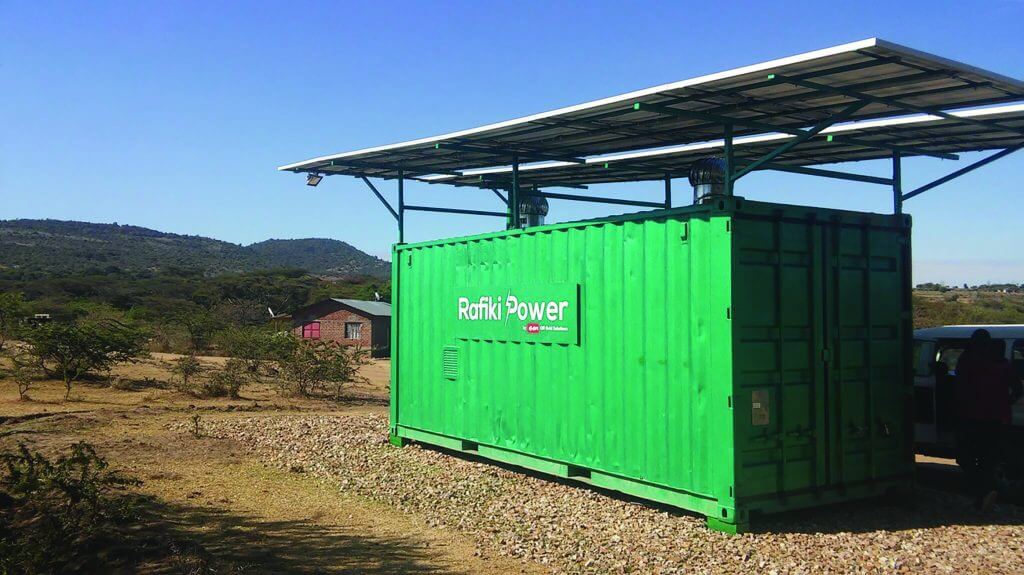
Technical Specification
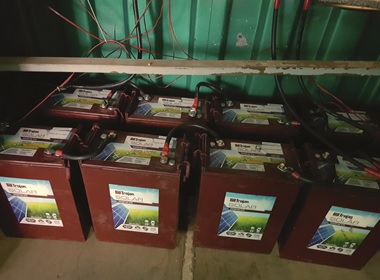
About the Company
Trojan Battery Company is the world’s leading manufacturer of deep-cycle batteries. Trojan is headquartered in Santa Fe Springs in California and has four plants in California and Georgia. Products range from batteries for golf and utility vehicles, transportation, floor machines, aerial platforms to renewable energy and marine applications. The company has a strong commitment to research and development and is a leader in advanced lead batteries.

Community Now Has Power When They Need It
City Utilities, USA
A community-owned electricity supplier in Missouri, serving more than 100,000 people, is being supported by an energy storage solution powered by lead batteries. The facility in Springfield is managed in a partnership between City Utilities and NorthStar Battery, where the company has installed a 1 MWh lead battery energy storage facility at a sub-station in a residential area of the town.
"We can draw power when we need to, we can deploy power when we need to, and in the event of an ice storm, we have two-and-a-half-megawatt hours of energy available for the local community.” Dr. Frank Fleming, co-founder NorthStar Battery

Technical Specification
The battery energy storage system (BESS) contains 15-parallel strings, each containing 76 x 12V-monoblocs of the NorthStar Battery BLUE+ absorbed glass mat (AGM) lead battery technology, giving a total of 1,140 x monoblocs, housed in two 40-foot pre-fabricated modular buildings.
The BESS has a total storage energy of 2.5MWh, but in daily operation is limited to a 40 percent depth of discharge to maximize discharge energy throughput for its operational life. Full battery energy is available for emergency situations such as severe weather events.
NorthStar lead batteries are intrinsically safe in normal operation, present no inherent fire risk and are virtually 100 percent recyclable at the end-of-life, presenting no environmental concerns.

About the Company
NorthStar Battery is a global leader in designing, manufacturing and deploying an innovative range of batteries and power solutions using thin-plate pure lead technology.
The company was established in 2000 by a group of experts in the lead battery industry, who together hold more than 100 years of experience. NorthStar products are so reliable and cost-effective they are used in more than 150 countries.
NorthStar employs over 500 people worldwide, with headquarters in Sweden and major operations in the USA and China. NorthStar also has global distribution and service centres, which include Indonesia, Dubai and Singapore.
“NorthStar Battery is “world class" when it comes to battery technology and battery storage systems.” Scott Miller, General Manager of City Utilities
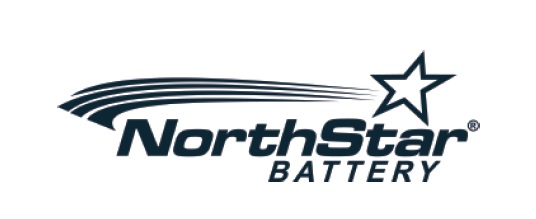
Consortium Launches Study of Lead Battery Solar Microgrids in Homes
Missouri S&T EcoVillage Project
The Consortium for Battery Innovation (CBI) has joined other members of the Missouri S&T Microgrid Industrial Consortium to provide resources for the construction of advanced lead battery microgrids at the Missouri S&T EcoVillage. Two on-campus high-tech homes will act as ”living laboratories” for studying renewable energy sources – and storage – for communities of the future. The project’s duration is 2018 – 2021.
"This project will enrich the learning experiences of S&T students, while also deepening the knowledge of many stakeholders with the real-world application of a grid-tied residential system with solar power generation and energy storage.” Grant Grunewald, Engineering Support Manager, EnerSys

Goal
The demonstration microgrids will allow research on the performance of advanced lead batteries in a small solar-based microgrid and in the economic aspects of sharing energy at the local/neighborhood level.
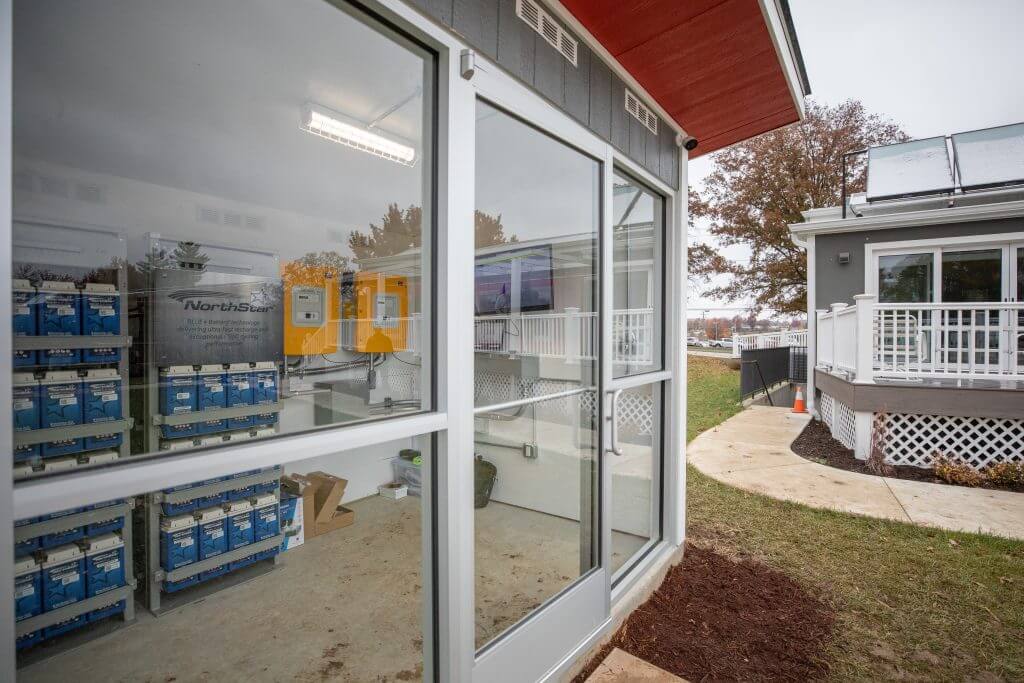
Background
The Missouri S&T EcoVillage is a small neighborhood comprised of solar homes designed by S&T students for competition at the U.S. Department of Energy’s Solar Decathlon. The microgrids will initially power the 2013 and 2015 solar homes. The university plans to expand EcoVillage into a “community of tomorrow,” with a total of six solar houses that will help advance renewable energy microgrid research, sustainable infrastructure, and human technology interaction. The site will provide the capability for hands-on training in renewable energy and microgrid technologies.
Participant Contributions
*Based in Missouri:
Technical Specifications
Each house has an AC combiner and critical load distribution load center panel board. AC-coupled advanced lead battery back-up system consists of:
Unique charge algorithms on how to control the batteries Installations local to each house installed on existing 240/120V 2-pole single-phase utility feed include:

"This project provides the opportunity to demonstrate the performance capability and longterm durability of advanced lead batteries as a critical component in the adaptation of renewable energy sources, such as wind and solar.” Dr. Frank Fleming, Co-Founder, NorthStar

Frequency Regulation For The German Power Grid
View the project video in our 'Batteries in Action' Series here
NARADA, Leipzig, Germany
Narada, one of China’s leading battery energy storage system suppliers has partnered with energy storage operator, Upside Group, in a large project for frequency regulation for the German power grid. The installation is located at Langenreichenbach, near Leipzig.
The battery capacity is 25 MWh and the system is specified to provide 15 MW for one hour for primary control reserve in frequency regulation. The network operator is Mitnetz who supply electricity to over 2 million customers.
“This frequency regulation energy storage PCR project is a symbol of transformation. This grid scale large BESS is Narada’s first investment and operation model project in the overseas market. Narada will take this opportunity to accelerate the promotion and application of the energy storage business in Europe and the global market” Chen Bo, CEO, Narada
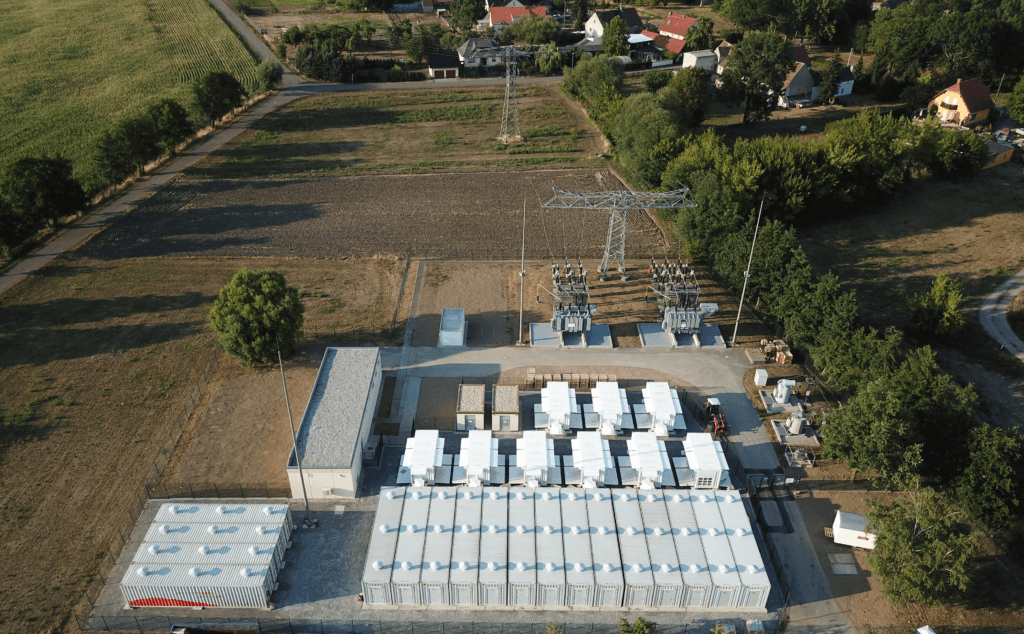
Technical Specification
The battery is comprised of 10,584 units 1200 Ah lead-carbon valve-regulated cells housed in 18 containers and delivers power through nine inverters supplied by SMA Solar Technology, each capable of delivering 1.8 MVA.
The system is managed by two controllers also provided by SMA so that the battery discharge and recharge are precisely controlled to match the grid requirements for maximum efficiency.
All the battery cells are individually monitored to ensure any deviation in performance is detected and corrected before there is a problem.
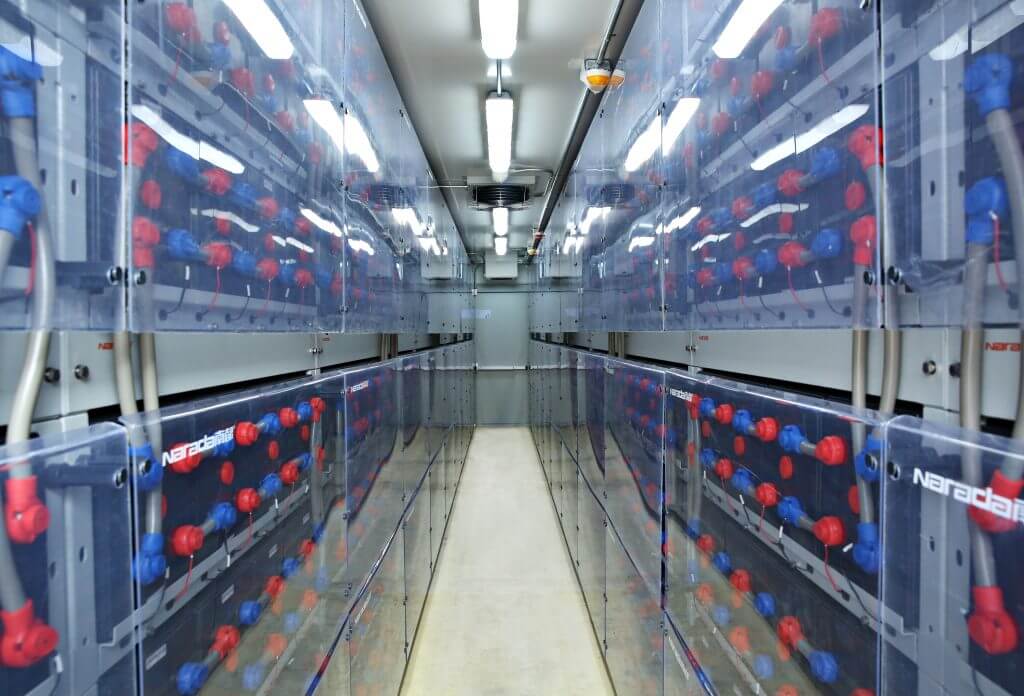
The battery is operated at partial state-of-charge so that it can accept and deliver charge at all times. The lead-carbon technology used was developed in partnership with ALABC. These REX Carbon cells have a projected calendar life of 15 years and an extended cycle life in shallow cycle service.
They have been extensively deployed in China for peak shaving, off-grid wind power installations, and in telecommunications hybrid solutions and energy storage model datacenters.
Narada and Upside have a number of similar plants in the pipeline for 2019 and beyond.
The batteries are installed in containers with all the racking and electrical connections pre-installed prior to shipping.
Each container has 588 units 2 V cells which are installed on site. Construction time, from breaking ground to connection to the grid, took three to four months.
Technical Summary
| POI | 20 kV |
| PCR Power | 15 MW |
| Plant Power | 16.4 MW |
| Storage Tech | Lead Carbon |
| Storage Cap. | 25 MWh |
| Plant Design Life | 20 years |
| Architecture | 1 + 1 MVSG 4 + 5 MVPS 8 + 10 Storage |
About the Company
Narada was established in Hangzhou, China in 1994 and has evolved into one of the world’s leading battery suppliers. The company majors in valve-regulated lead batteries and lithium batteries for various applications.
The renewable energy storage section is a major market for the company and Narada has an increasing presence in international markets.

Alcatraz has always been cut off from the mainland, with no power lines. Today, its tourism business benefits from solar panels connected to a battery bank and power inverters that help power the island instead of relying solely on diesel generators.
The system has reduced the island’s fuel consumption by 45 percent since its 2012 installation. It also saves more than 25,000 gallons of diesel fuel a year.
Stafford Hill Solar Farm in Rutland, VT, carries a unique distinction beyond its nearly 7,800 solar panels. It’s the first solar microgrid funded by the U.S. Department of Energy (DOE) and the first system in the country that maintains mission-critical power on renewables and storage alone for extended periods of time.
The farm can generate enough electricity to power 2,000 homes during full sun.
This project, along with other future developments, has the potential to significantly enhance energy security of the US with sustainable backup power systems.
East Penn Manufacturing’s wholly-owned subsidiary Ecoult is supplying energy storage technology to Raytheon for use in a new Microgrid project. This project, along with other future developments, has the potential to significantly enhance our Nation’s energy security with sustainable backup power systems. The Microgrid is being used by the U.S. Department of Defense at the Otis Air National Guard Base on Cape Cod. The Base will rely on the Microgrid to provide reliable and secure power to its critical military infrastructure.
This will be the first wind-powered Microgrid in the US Department of Defense and the the first US Military Facility cyber-secure connection to an Independent System Operator allowing returning revenue with the target of a 5-year simple payback.
Using wind, water and solar power, Eigg an island off the coast of Scotland has become one of the world’s first island communities to implement a completely renewable power grid supported by lead batteries.